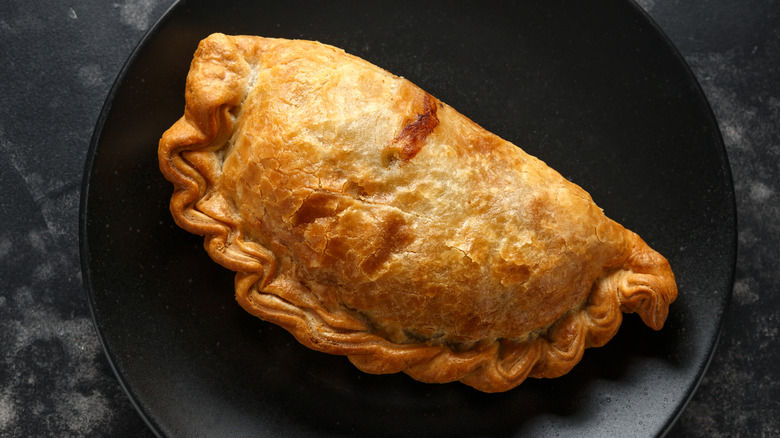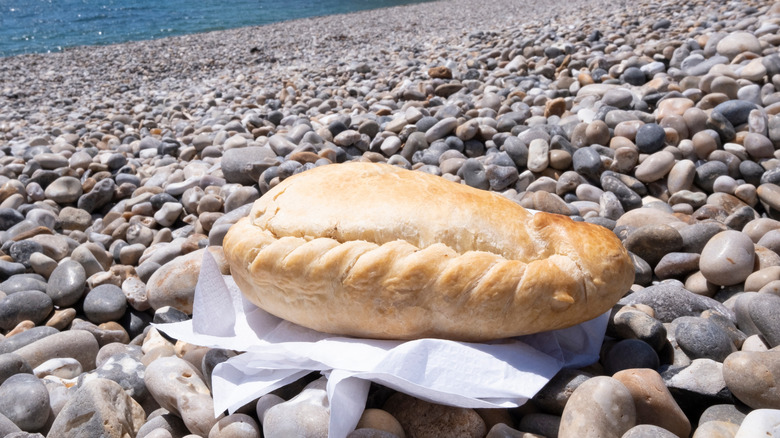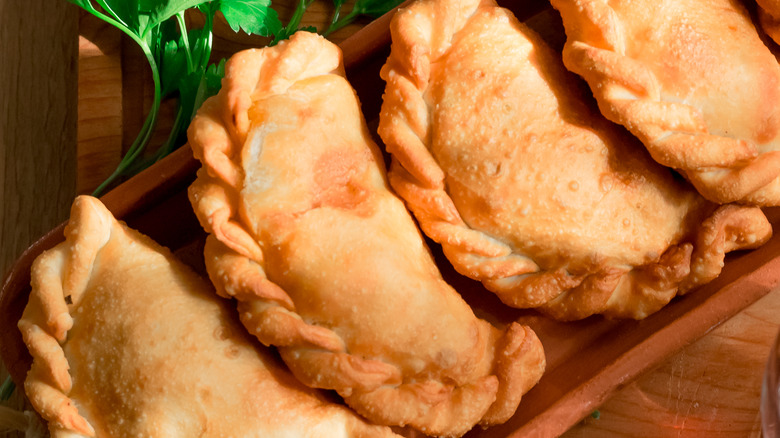The Strict Requirement Traditional Cornish Pasties Must Meet
If you've ever seen the popular U.K. series "Doc Martin" or the charming film "Fisherman's Friends" you've seen images of Cornwall. Port Isaac, where both are filmed, is an iconic destination that provides you with the essence of England's most south-westerly county — tall cliffs and green hills against the swirling sea. But there is another side to Cornwall away from the quaint, seaside villages. A part of Cornwall that is more industrious than seafaring. A part that gave birth to that famous little hand-held pie, the Cornish pasty.
As early as the 13th century, the Cornish people took to mining tin. Miners' wives would prepare for them small hand pies filled with meat and vegetables, which we now know as pasties. The edges of the pasties would be crimped, forming a handle for the miners to hold to with their arsenic-covered hands (via Cornish Pasty Co). They would then discard their handles, leaving them to keep the "knockers" (ghosts of the mines) happy. It is this crimped edge that defines a Cornish pasty more than anything else. Strict requirements are in place that help preserve this traditional food and help distinguish a Cornish pasty from similar hand pies like empanadas.
Protecting heritage
In Europe, there is a type of certification known as a PGI. This stands for Protected Geographical Indication and is defined by the European Certification System as "a product that originates in a specific place, region or country, the quality or characteristics of which are essentially or exclusively due to a particular geographical environment." Cornish pasty is protected under this certification thanks to the efforts of the Cornish Pasty Association, a collective organization of pasty producers.
Its mission is to ensure geographic integrity and set the standards by which all pasty producers must follow. For instance, in terms of the inner filling, the pasty must be a minimum of 12.5% meat to 25% veg, per the Cornish Pasty Association. And, in order to be a Cornish pasty, the ingredients must be minced beef, diced potato, turnip, and onion, seasoned with salt and pepper. On the outside, the pasty must be either rough or puff pasty which is savory and sturdy enough to hold all the filling without breaking. However, all of these requirements are moot if the pasty does not meet its greatest requirement — proper crimping.
It's all in the crimp
As the Chair of the Cornish Pasty Association, Jason Jobling, explained to Metro UK, a proper Cornish pasty needs between "18 to 20" crimps. What exactly is a crimp? Crimping is the specific way of sealing the filling inside of the dough. As demonstrated by BBC Food, you simply push down on the edge of pasty dough and twist in. You should end up with a capital "D"or half-moon-shaped pasty.
The Cornish Pasty Association states that an accomplished pasty maker can crimp between three to four pasties every minute. There is also a delineation in name between pasties that have been crimped by left or right-handed bakers. A pasty that has been crimped by a left-hander is called a cock pasty, while a pasty crimped by a right-hander is called a hen pasty. The British are very fond of their heritage, with the Cornish people certainly being no exception. Their pasties are a global export, with companies like the Cornish Pasty Co. in the U.S. bringing the tradition across the pond. Just remember to count the crimps of your pasty in order to make sure it's authentic.


